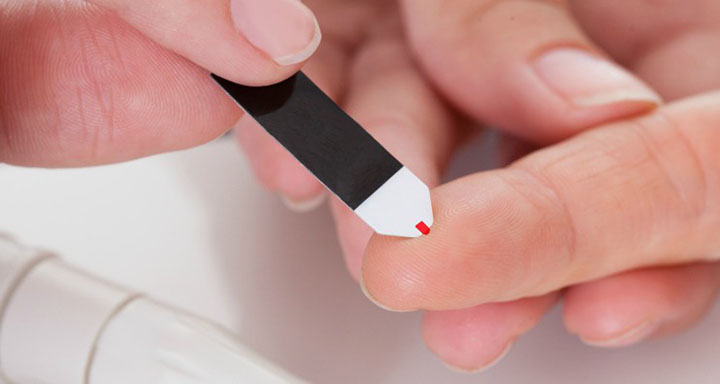Millions of Americans suffer from diabetes. However, those from minority populations are at a greater risk for contracting the disease and experience its complications. Your ethnicity may be a diabetes risk factor as different genetic makeups influence how the condition affects the body. This article further explores these disparities and gives some recommendations for what those at an increased risk can do to lower their chances of becoming diabetic. The statistics about minority populations with type 2 diabetes is startling.
According to numbers from the American Diabetes Association, almost 16 percent of Native Americans and Alaskans are living with the disease. Additionally, about 13 percent of African- Americans 20 years of age or older suffer from type 2 diabetes. Finally, 12.8 percent of Hispanics and 9 percent of Asian-Americans are living with type 2 diabetes. Even scarier is the fact that African-Americans with type 2 diabetes are between two and four times likely than whites to die from the disease. Blindness, kidney problems, and amputations are other problems that minorities with diabetes are more likely to experience. Why the huge disparity? While not a certainty, it is thought that genetics play a huge role in affecting who is at a risk for type 2 diabetes and its complications. Genes are not the only factor, though. Other factors include lifestyle factors, access to quality healthcare, and cultural exercise and diet habits.
With that said, there are ways that those exhibiting risk factors for type 2 diabetes can reduce the risk. Here are some recommendations.
Reducing Type 2 Diabetes Risk
-
Weight Loss & Diet
Ask your doctor, especially if you are overweight and/or belong to a minority population, for a diabetes screening. Weight loss is a huge factor in reducing the risk of type 2 diabetes for those who are overweight. Even losing as little as 5 percent of your body weight can cut the risk of diabetes by half and rid you of at least one unnecessary diabetes risk factor. A proper diabetes diet also plays a huge role in reducing a person’s risk for type 2 diabetes. Those at risk for diabetes should aim to eat more fruits, vegetables, and whole grain.
-
Exercise
Exercise is another great way to stave off diabetes. A number of studies have shown that regular exercise can limit the risk of becoming diabetic. It is also recommended that those at risk for diabetes watch less television. In this case, the inactivity can contribute to glucose build up and act as a diabetes risk factor. Those prone to type 2 diabetes should watch less than two hours of television a day.
-
Give Up Smoking
Giving up smoking is clearly easier said than done, however, smoking is another less-conspicuous diabetes risk factor. Those who smoke are 50 percent more likely to develop diabetes. If the other health problems smoking can cause aren’t enough to encourage a person to quit smoking, maybe the increased risk of diabetes can be a further motivator to give up the habit.

Source: foxnews.com
-
Managing Stress
Managing stress can also prevent diabetes because the body’s response to stress releases several hormones that increase blood sugar. Therefore, it is important for those at risk for diabetes find ways to reduce the stress in their lives.
-
Sleep Deprivation
Those that suffer from chronic sleep deprivation are at increased risk of becoming diabetic because of the link between sleep deprivation and obesity. Those with trouble sleeping should discuss this with their doctor.
-
Diabetes Medication
Those who have shown to have a diabetes risk factor or two should be proactive with their blood sugar control. Those struggling with this should have a talk with their doctor on ways they can improve. Sometimes medication may be necessary but often a change in diet and exercise level can go a long way to regulating one’s blood sugar. Eye exams, cholesterol screening, foot exams, and pneumococcal vaccinations are other services that potential diabetics should consider. For those already on diabetic medicine, it is important that they take them as prescribed.

Source: cheos.ubc.ca
-
Depression & Anxiety
Finally, while there may not be a correlation between depression and contracting diabetes, it is more difficult for those suffering from depression and anxiety to control blood sugar levels. Because of this, those with depression should address it as soon as possible.
To conclude, there is more from a public policy perspective that medical experts can do to address the disparities between whites and nonwhites when it comes to diabetes. For example, increased access to health care in minority communities has the potential of going a long way to bridge the gap. Increased educational initiatives among minority populations is an important component as well. It is important to educated members of minority groups about their increased risk for type 2 diabetes, the consequences of becoming diabetic, and what they can do to decrease their risks. Educating people on effective blood sugar control, proper diabetes diet, and exercise will not only decrease the number of people with diabetes in the United States but will also decrease the number of those with other health problems.
Featured Image Source: yogurtinnutrition.com
Sourced from: everydayhealth







